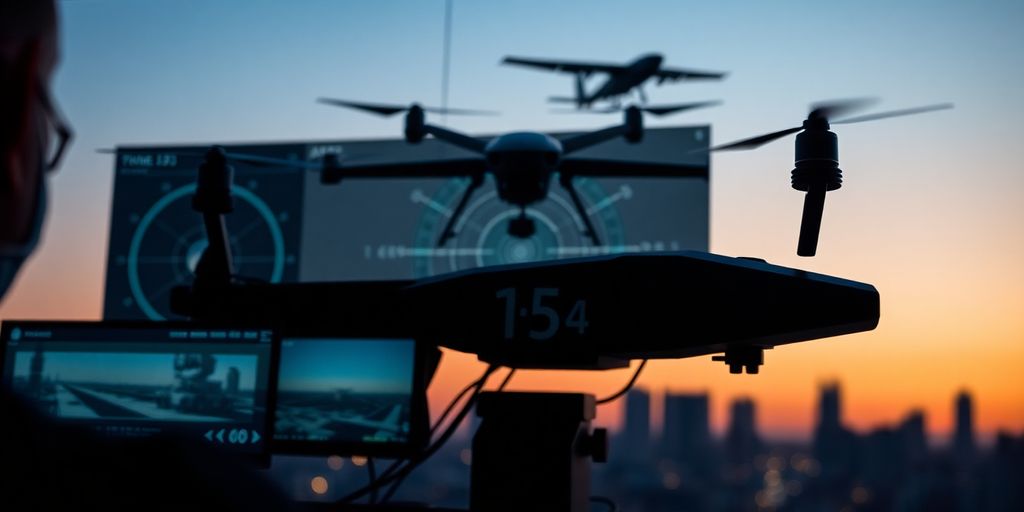In a significant shift of military priorities, the U.S. Department of Defense has redirected critical counter-unmanned aircraft system (C-UAS) technology, initially earmarked for Ukraine, to bolster U.S. forces. This decision underscores the escalating global threat posed by drones and highlights a renewed focus on homeland defense and the protection of American assets.
U.S. Prioritizes Domestic Counter-Drone Capabilities
The U.S. Department of Defense has made a strategic decision to reallocate advanced counter-drone systems, originally intended for Ukraine, to enhance the defensive capabilities of U.S. forces. This move reflects a growing concern over the proliferation and sophistication of drone technology, which has been increasingly utilized in recent conflicts and poses a significant threat to military installations and critical infrastructure worldwide.
Key Takeaways
- The redirection of C-UAS technology signifies a heightened emphasis on protecting U.S. military assets and personnel from evolving drone threats.
- The decision comes amidst increasing global awareness of the effectiveness of drone attacks, as demonstrated by recent incidents.
- The U.S. is actively investing in and developing multi-layered C-UAS strategies to counter diverse drone threats.
The Evolving Threat of Unmanned Aircraft Systems
The urgency surrounding C-UAS technology has been amplified by recent events, including a surprise drone attack on a Russian airbase. This incident, which showcased the potential for devastating and elaborately planned drone operations, has prompted military planners globally to reassess their defensive strategies. The attack underscored the need for comprehensive, multi-layered C-UAS solutions that can detect, identify, and neutralize drones across various scenarios.
Global Efforts in Counter-UAS Development
The past month has seen a surge in activity within the C-UAS sector, with significant advancements and collaborations aimed at addressing the evolving threat landscape:
- Acquisitions and Partnerships: AeroVironment, Inc. acquired BlueHalo, LLC, strengthening its position in C-UAS solutions across various technologies. KONGSBERG and Naval Group also signed a comprehensive partnership agreement with a focus on C-UAS.
- DoD Initiatives: The U.S. DoD’s Defense Innovation Unit (DIU) and U.S. Northern Command (NORTHCOM) launched new opportunities for industry to present C-UAS capabilities, specifically seeking low collateral defense systems.
- International Agreements: The U.S. announced a $1 billion defense agreement with Qatar for the Fixed Site Low, Slow, Small Unmanned Aircraft System Integrated Defeat System (FS-LIDS), marking Qatar as the first international customer for this advanced system.
- Technological Enhancements: Germany’s BAAINBw commissioned Hensoldt to enhance the ASUL drone defense system, while QinetiQ US secured a $41 million task order to support C-UAS software and technology integration for the U.S. Army.
- New Vehicle Development: Roshel, in partnership with Leonardo UK, unveiled the Senator Counter-UAS Vehicle, integrating Leonardo’s Falcon Shield C-UAS technology onto an armored platform.
These developments highlight a global recognition of the critical need for robust counter-drone capabilities and a concerted effort to innovate and deploy effective solutions against this rapidly evolving threat.
Sources
- Surprise Russian Airbase Attack Draws Renewed Spotlight on Counter-UAS Technology Development, Defense Security Monitor.











